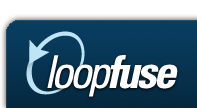LoopFuse turns open source heritage into big brother sales tool


He is now vice president of field operations for LoopFuse, a SaaS sales support company that has made its bones serving such open source firms as Acquia, Zimbra, and MuleSoft.
(Full disclosure. C|Net's Matt Asay is an advisor to LoopFuse.)
With all that open source heritage, Quinlan admits the resulting product is sort of Big Brotherish.
LoopFuse's OneView automates the lead management process by taking all the data that even anonymous visitors give to your site and delivering a "360 degree view" on each prospect.
If you send someone an e-mail and they respond, LoopFuse collects the clickstream. If they just visit the site, it collects the clickstream. If a number of different people from the same IP address click to the site it compiles the clickstream.
This can be combined with other data available on the Web. Linkedin profiles, Hoovers reports, the prospect's own Web site. The dossier can be quite complete.
When the product being sold is open source software this is straightforward. You are looking to turn your users into buyers. Their first entry to the site might be to download code, and if you can trace their path through your support forums then your sales call is a service.
The challenge has been to take what was learned in converting open source users into customers, and apply it to other industries.
Quinlan explains.
"We let our customers create a series of rules. Determining what makes a qualified prospect is different from business to business.
"We score based partly on activities but also on the meta data the company provides. If your product is suited to five vertical industries, you can create rules that set scores based on that. Or you can target a title.
"This helps create scoring rules which interface with the content information and activities.
"I can define URLs, for the demo page, the pricing page, etc. – whatever my key buying signals are – I can identify them and assign a number of points to them, based on someone visiting that page."
I can even do negative rules. One customer assigns a negative scoring if you hit the recruitment page. Job seekers aren't good prospects.
Points are assigned based on the clickstream data, and the sales staff calls the people with the highest scores.
The idea is that your telephone salesmen will call on their best prospects, armed with knowledge to answer pointed questions.
You're speeding prospects down the sales funnel, focusing your time on your best prospects, and speeding the sales process as well.
All this makes sense for both sides of a business-to-business transaction. Such users can understand the service of being tracked. They might want to track visitors themselves and become more efficient.
But what happens when this goes into consumer markets?
Quinlan doesn't know. But he recently hired an expert in real estate sales, so next year he will probably find out.